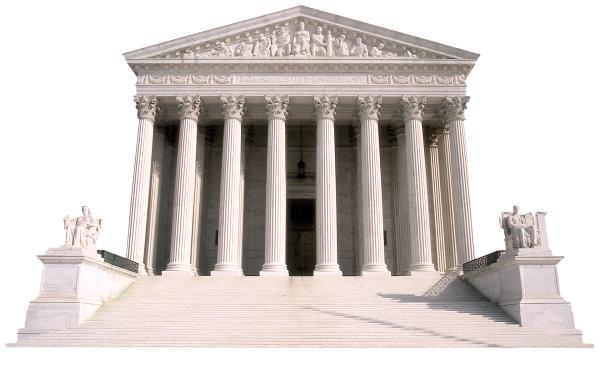But as I wrote back in October:
“The first two, addressing workers employed by the federal government and employees of hospitals and health care facilities funded by the federal government, are legal no-brainers …. It’s the third prong that gives pause.”
And so it has come to pass. The first issue (mandating vaccination in federal employees) was never heard. As to the second- whether the federal government can compel vaccination in health care facilities – the Court responded in the affirmative in a 5-4 decision. It was the third prong, a mandate for businesses with more than 100 employees, that the Supreme Court rejected (6-3) – but not for the reasons opponents raised in the media or political blogosphere.
- The Court did not reject the constitutionality of the OSHA law – nor the constitutionality of its emergency provisions.
- They did not accept the claim that corona is not a recognized hazard.
Their decision turned on whether COVID is a workplace hazard. Or, to swipe language from Worker’s Compensation Legislation, would a case of COVID arise out of or in the course of employment? And here, they refused to go, saying that this was a generic, population-driven, all of us in the box, disease - worker safety was not the driving issue. Under this rubric, they ruled that OSHA was not the designated agency to divine, direct, or mandate what they called a public health response.
Two separate opinions were written – one pertaining to the Health Care Workers [1] and the other to large and medium employers. [2] Both opinions claimed concurring and dissenting opinions. The opinions themselves were unusual. They were issued as per curiam decisions, meaning “in the name of the court,” rather than under the signature of a specific judge, as is the usual case. Per curiam decisions tend to be short – even one-liners. Indeed, only two come to mind with lengthy opinions, one of which, Roman Catholic Diocese v. Cuomo, also pertained to COVID. The COVID workplace vaccine decisions were nine and ten pages long – not including the concurrences and dissents. The decisions themselves are not final – i.e., on the merits; they only pertain to whether the injunctions staying enforcement of the mandates may be permitted to stand. Nonetheless, they are harbingers of the court’s final rulings on the merits.
The opinions held a few surprises
- The swing vote in the Health Care Workers case was Justice Kavanaugh.
- Justice Barrett considered the “most likely” to side with the liberal bench, signed on with the traditional conservatives. Indeed, given that her name does not appear in the concurring opinions, one might even venture that she was the author of the workplace case.
- If the two opinions were integrated and read as one, there are internal inconsistencies- meaning that the Court itself is grappling – looking for hooks on which to hang their judicial hats even if they contradict the companion case. Anything perhaps to sustain their initially held opinion in an outcome-determinative fashion.
- Perhaps most surprising is that even in the OSHA-employee case denying the overall power of OSHA to order across-the-board vaccines, the court issued carve-outs where OSHA promulgated vaccine mandates would be acceptable!
Other cases surely will arise that will trigger similar issues – and so it makes sense to delve more deeply if only to see where viable objections lie and identify the specious ones. We’ll start here with the National Federation of Independent Business v the Department of Labor and OSHA – the case addressing vaccination in generic large and medium workplaces.
Beginning aggressively, the decision characterizes the mandate solely as a vaccine requirement without acknowledging the “opt-outs” for testing and masking, religion, medical reasons, or showing of the remote chance of contagion. It focuses on the novelty of the decision, claiming an ostensible lack of precedent – that this is something that neither OSHA nor Congress has ever done before. Justice Gorsuch’s concurring opinion notes that the power to respond to epidemics rests with the states. (Actually, Congress has implemented sweeping national epidemic regulations before, to wit the National Quarantine Act of 1893 pushed by Republican President Benjamin Harrison, which in fact usurped state quarantine powers, but no matter).
Several features stand out. Among them is the focus that “as its name suggests, OSHA is tasked with ensuring occupational safety— that is, “safe and healthful working conditions.” §651(b) … The Act empowers the Secretary to set workplace safety standards, not broad public health measures.” Focusing on the occupational nature of the Act, the court disavows the broad public health practices promulgated under this pretense, disputing the claim that the risk of contracting COVID-19 at work constitutes such an occupational danger.
“Although COVID– 19 is a risk that occurs in many workplaces, it is not an occupational hazard in most. COVID–19 can and does spread at home, in schools, during sporting events, and everywhere else that people gather. That kind of universal risk is no different from the day-to-day dangers that all face from crime, air pollution, or any number of communicable diseases.”
The judges seem most bothered by the lack of specificity attached to the rule – the blunt edges of the mandate, without regard to different conditions presented by diverse workplaces.
“[t]he danger present in such workplaces differs in both degree and kind from the everyday risk of contracting COVID–19 that all face. OSHA’s indiscriminate approach fails to account for this crucial distinction— between occupational risk and risk more generally—and accordingly the mandate takes on the character of a general public health measure, rather than an “occupational safety or health standard.”
In sum, the court states that while 6500 worker deaths and 250,000 hospitalizations might be prevented (the uncontestable OSHA estimates), these morbidities and mortalities are in people who just happened to be workers- and not because of the work conditions themselves,
“Where the virus poses a special danger because of the particular features of an employee’s job or workplace, targeted regulations are plainly permissible.”
Nevertheless, the decision validates the overall power of OSHA to act – avowing the constitutionality of the Act, even to enact emergency rules when employees are exposed to grave danger. Contrary to claims of opponents of the mandate, the court specifically affirms OSHA’s general power to act in a COVID type situation– going so far as to advise that in specific occupations, OSHA would be well within its authority to enact such rules, such as researchers working with COVID, or employees working in particularly crowded or cramped environments.
“The central question we face today is: Who decides?”
Perhaps in contradiction to an adjudicated role for OSHA in a COVID situation where the mandate is specifically related to a targeted workplace, the concurring opinion focuses on the superior role of state and local governments, as “27 States before us submit,” to engineer all public health responses. There is, of course, good reason for this, as the States generally rely on experts in their health departments. Justice Gorsuch’s argument doesn’t note this but instead stresses that such decisions should be left in the hands of an elected legislature.
Gorsuch and Co. go on to bemoan the state of affairs if an unelected Agency usurps the powers vested in local and state legislatures. While not minimizing the extent and danger of the epidemic, they frame the question of regulating response, paradoxically formulated as:
“The central question we face today is: Who decides?”
The dissent, authored by the liberal side of the bench, first reminds us that:
“the majority does not contest that COVID–19 is a “new hazard” and “physically harmful agent”; that it poses a “grave danger” to employees; or that a testing and masking or vaccination policy is “necessary” to prevent those harms.”
Arguably frustrated with the hubristic tone of the concurring opinion, the dissent rails about the disrespect given to advice generated by an agency “informed by a half-century of experience and expertise in handling workplace health and safety issues. ]They note that[ the Standard also has the virtue of political accountability, for OSHA is responsible to the President, and the President is responsible to and can be held accountable by, the American public.”
Then, in what can only be described as a dig at the concurring opinion questioning who should make the ultimate decision regarding pandemic policy: the dissent notes:
“And then, there is this Court. Its Members are elected by, and accountable to, no one. And we “lack the background, competence, and expertise to assess” workplace health and safety issues.”
They end with a sad lament:
“When we are wise, we know enough to defer on matters like this one. …. Today, we are not wise.”
Indeed, such sentiment may have laid the basis for the broad vaccine mandate in health care facilities funded by the government.
To be continued….
[1] Biden v. Missouri, Case No. 21A240 (Jan. 13, 2022); Becerra v. Louisiana, Case No. 21A241 (Jan. 13, 2022).
[1] Nat'l Fed'n of Indep. Bus. v. Dep't of Labor, Case No. 21A244 (Jan. 13, 2022); Ohio v. Dep't of Labor, Case No. 21A247 (Jan. 13, 2022).




